Acacia Law Yes. There are two major alternatives to strictly bond implementation. One is what they call pre-trial services management. What that means is that there is a division in the court that is only answerable to the court. This division will monitor and supervise a person who is released, whether it is on bond or not.
Monitoring Devices and Home Arrest
The second form involves pre-trial services and in conjunction with some sort of monitoring device. Normally, the device is an ankle bracelet of some sort, but can also be curfews and home arrest. What I mean by that is that you must be home for a certain length of the day. You can only go out when you have permission, or you may have curfews wherein you can only leave the house for a short time and then after that you have to be home the rest of the day.
Interviewer: So, the first part of your job if you’re successful, is to either reduce or eliminate the bond, or propose home monitoring or some kind of alternative to get them out of prison, while they’re awaiting trial.
Acacia Law That is correct. It is not an easy thing to do. Unfortunately, the bonds tend to be rather high, and quite frankly it can be difficult to reduce them when you’re dealing with these types of cases. This is because if convicted, a person is normally looking at a significant number of years in prison. The fact that they are in custody for three to nine months’ pales in comparison to what they are facing if they lose the case. So, your resources are ordinarily expended on prevailing in the case. Frequently, the price of the bond is unaffordable for most families.
High Bonds May Be Difficult to Reduce
Interviewer: I understand what you mean; the bond may be so high that it simply can’t be paid.
Acacia Law What I’m trying to explain is that if a family has $15,000 or $20,000, and they are faced with a bond that’s set at $200,000. They would rather that the person be in custody and spend the $20,000 on a high-end lawyer who is an expert in this area. Who knows ballistics for example, or all the forensics associated with stab wounds and shootings.
So that they will at least know that their son or daughter, husband, wife, mother, father, have the best representation to get them out from underneath what will potentially cost them many years of their life.
Timeline of Going to Trial
Interviewer: I understand. How long will it take to go to trial and through trial, for these kinds of offenses?
Acacia Law I believe it’s 365 days, or one calendar year for someone to go to trial. However, there are so many different circumstances that come up where time is extended or waived, that essentially even when they’re in custody, it’s rare that they’ll be tried in that time days on a serious case.
Now, in part, that is not necessarily a bad thing. Because, if the state is persuaded or convinced to drop the allegation of dangerousness, and the person has spent four to six months in custody, then a judge can place them on probation and release them with credit for time served. This time served is part of their probationary term, and they avoid prison time all together.



